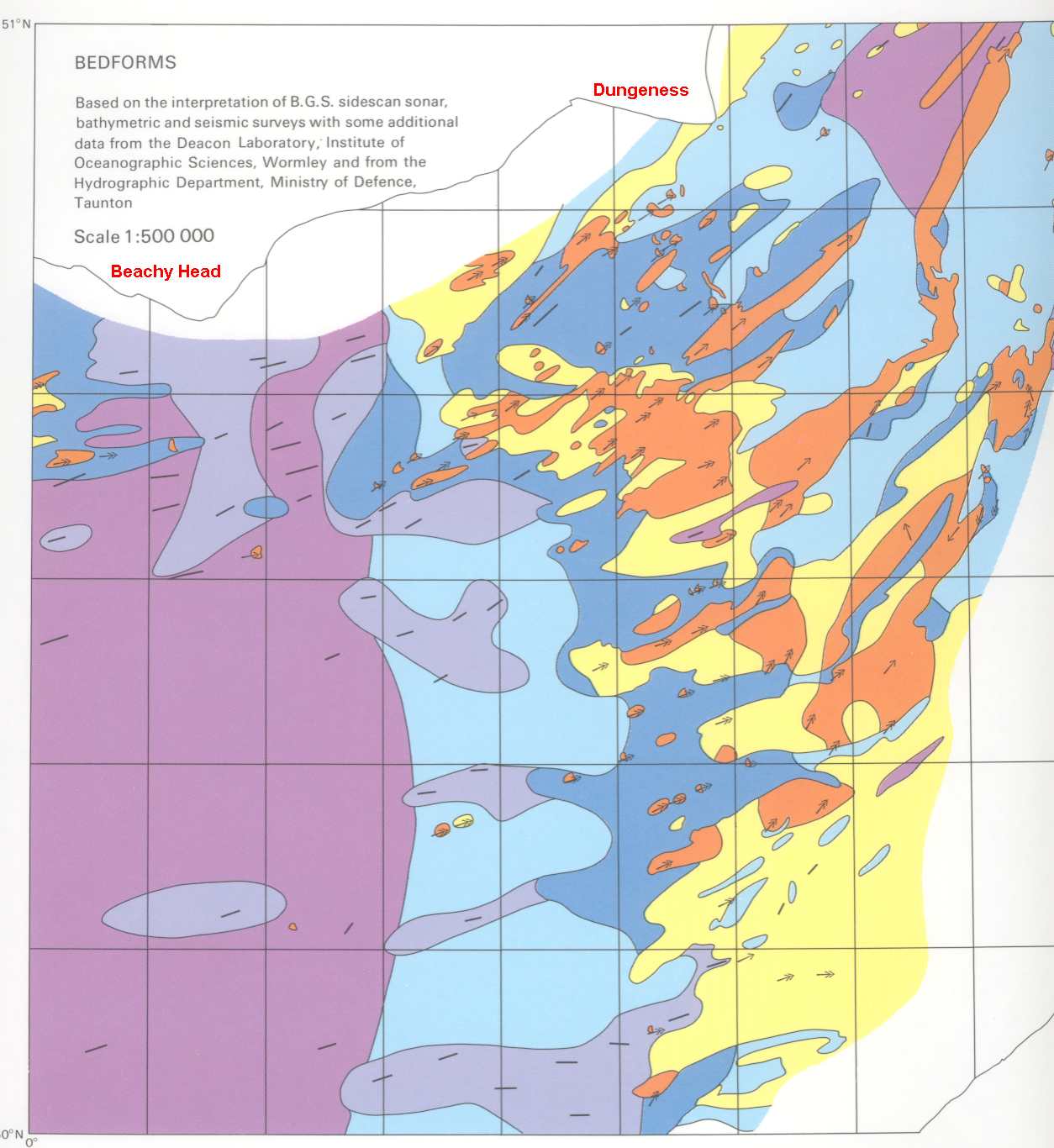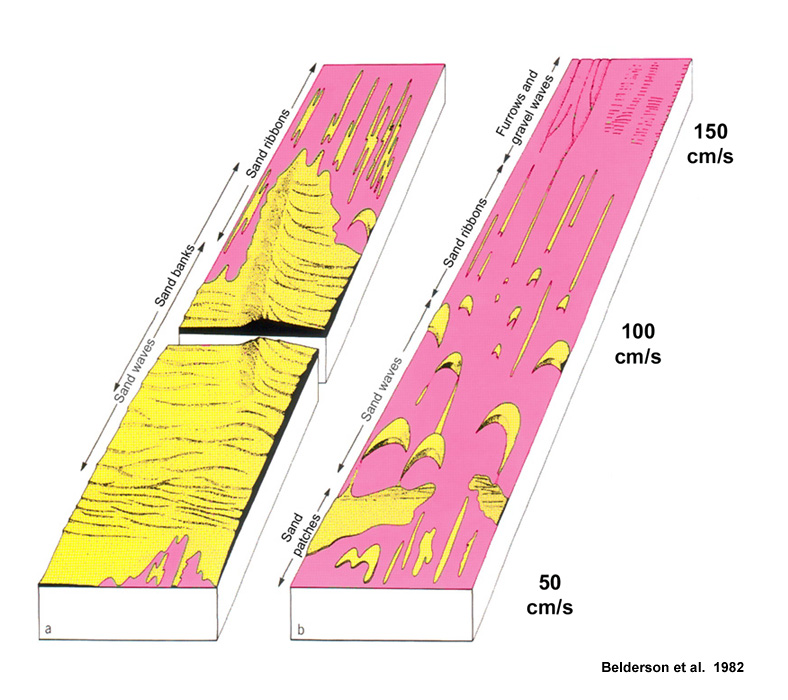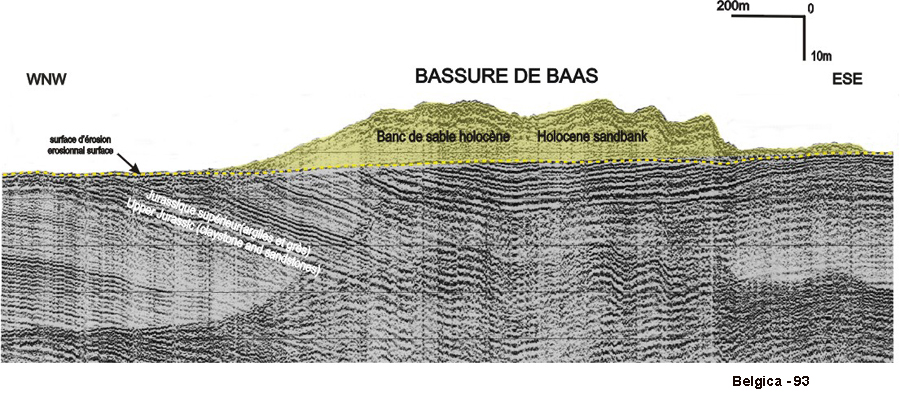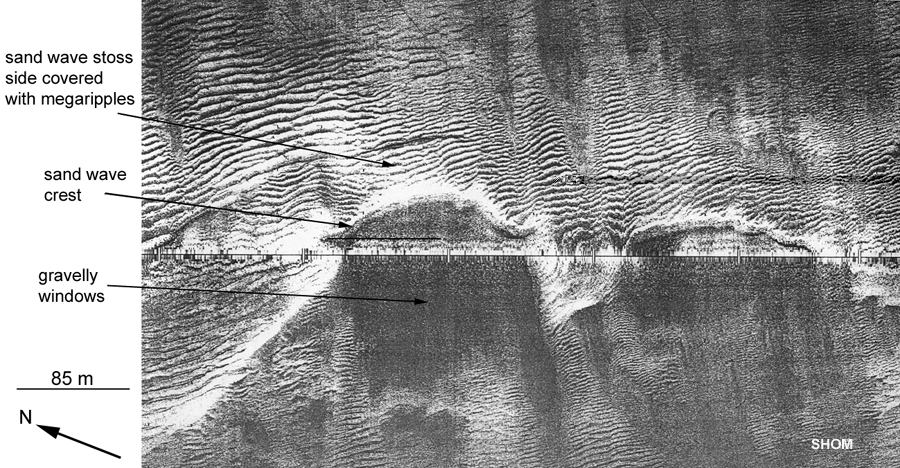

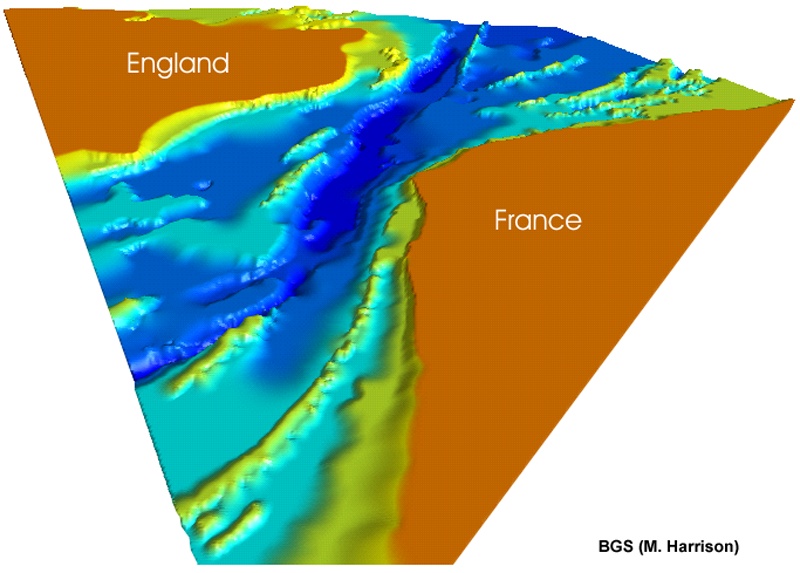 The Dover Strait forms the narrow link which joins the English Channel to the North Sea, and also lies on
the boundary between the English landmass and the European continent. At its narrowest, the strait is
33km wide.
The Dover Strait forms the narrow link which joins the English Channel to the North Sea, and also lies on
the boundary between the English landmass and the European continent. At its narrowest, the strait is
33km wide.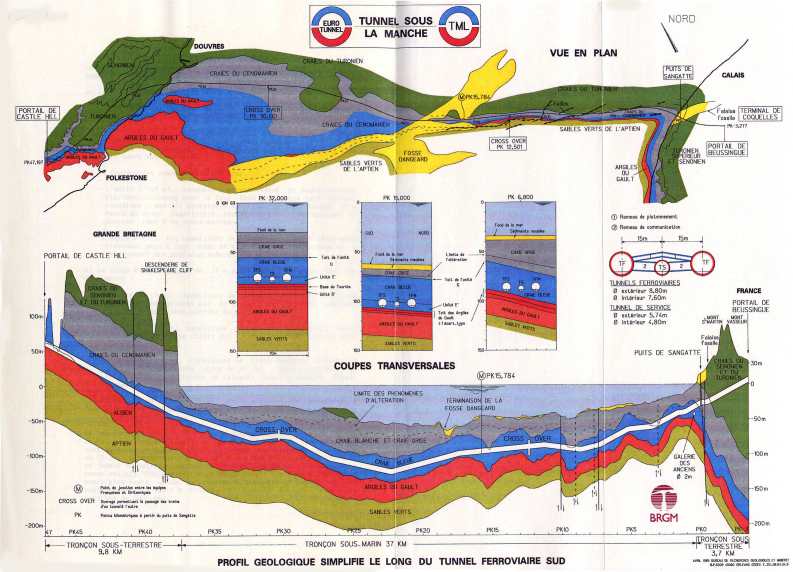
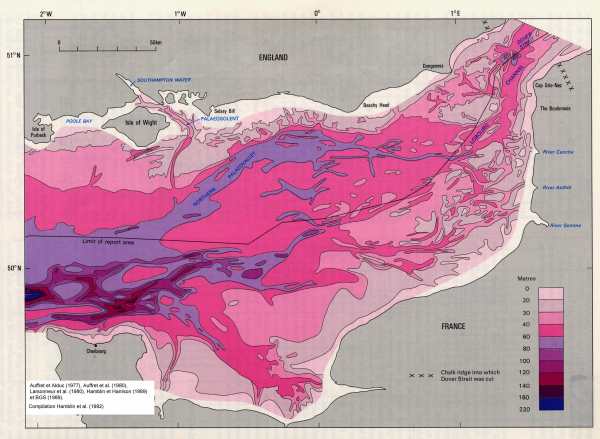
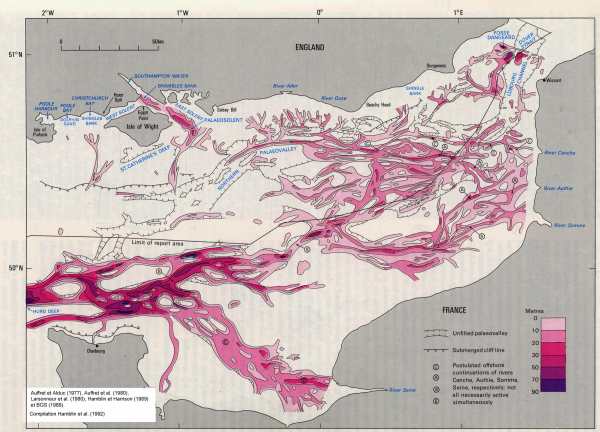 During Quaternary times there were a series of global climatic variations (oscillations) which comprised
glacial periods characterised by the growth of polar ice caps, and interglacial periods characterised by
the decay of polar ice caps. During glacial periods sea level fell to levels as low as –120 m below present
day sea level as the polar ice caps and continental glaciers locked in enormous quantities of seawater.
During interglacial periods sea level generally rose to present day levels. There may have been as many
as 20 glacial –interglacial cycles during the 2 million or so years of the Quaternary when sea level rose
and fell.
During Quaternary times there were a series of global climatic variations (oscillations) which comprised
glacial periods characterised by the growth of polar ice caps, and interglacial periods characterised by
the decay of polar ice caps. During glacial periods sea level fell to levels as low as –120 m below present
day sea level as the polar ice caps and continental glaciers locked in enormous quantities of seawater.
During interglacial periods sea level generally rose to present day levels. There may have been as many
as 20 glacial –interglacial cycles during the 2 million or so years of the Quaternary when sea level rose
and fell.